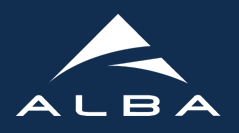MISTRAL
Soft X-ray microscope beamline
The full-field Transmission X-ray Microscopy beamline MISTRAL is one of the seven phase-I beamlines at ALBA. It is devoted to cryo nano-tomography in the water window and multi-keV spectral regions (E= 270 eV–2600 eV) for biological applications. In addition, spectroscopic imaging (a series of 2D images over a range of X-ray wavelengths) at several interesting X-ray absorption edges can be performed.
The Transmission X-ray Microscope (TXM) works from 270 eV to 1200 eV. A single-reflection elliptical glass capillary condenser focuses monochromatic light on to the sample, which is at cryo-temperature. The transmitted signal is collected by an objective Fresnel Zone plate (of 25 or 40 nm outermost zone widths) and a magnified image is delivered to a direct illumination CCD camera. The routinely expected spatial resolution in 2D is 30 nm and ~50 nm for tomographies. An upgrade of the microscope to higher energies (i.e. Zernike phase contrast at 2600 eV) is planned, as well as the development of correlated fluorescence visible light microscopy.
Facilities for sample cryo-preparation as well as software reconstruction and analysis will be available for the users.
Operation
The beamline started users operation on February 12th 2013.
Staff
Scientist Responsible: Eva Pereiro
Scientits: Tanja Ducic, Ana J. Pérez
Post-doc: Andrea Sorrentino
Beamline Technician: Ricardo Valcárcel
Software Engineer: Marc Rossanes
Visiting scientist: Salvador Ferrer
People that have contributed to the optics design: Malcolm Howells & Josep Nicolás
People that have worked at the BL: Daniel Bacescu (Mechanical Engineer), Maria Brzhezinskaya (Scientist)
Beamline Characteristics
|
MISTRAL |
Comment |
|
|
Microscope type |
TXM |
|
|
Current Status |
under commissioning |
open for users in 2012 |
|
Source |
bending magnet |
|
|
Energy range |
270-2600 eV |
TXM: 270-1200 eV available; upgrade to 2600 eV planned. |
|
Energy resolution |
up to E/DE=5*103 |
|
|
Zone plates available |
25 nm and 40 nm |
|
|
Sample format |
TEM round grid (3.05 mm) |
|
|
Tomography capability |
yes |
|
|
Tilt range |
± 65º |
|
|
Cryo capability |
yes |
|
|
Detector type |
PIXIS-XO: 1k * 1k, pixel size = 13um |
|
|
X-ray magnification |
adjustable range depending on objective used (1500-3000 mm from sample) |
|
|
Image contrast capability |
amplitude contrast |
Zernike phase contrast planned for outside the water window energy range |
|
X-ray fluorescence |
no |
|
|
Light microscope |
for sample alignment only |
integration of a fluorescence light microscope planned |
|
Filter sets for light fluorescence microscope |
no |
|
|
Raw data format |
file format: XRM, raw data, HDF5, TIFF file size per image: ~4 MB |
|
|
Data analysis software capabilities available |
ImageJ, IMOD, PRIISM, XMIPP. |
|
|
Preparation Lab |
Bio-lab (safety level 2). Plunge freezing preparation available. |
under construction |
Technical Description of BL Optics
Polychromatic radiation will be delivered by a bending magnet. A VLS Plane Grating Monochromator (PGM) will fill with light an elliptical glass capillary, which will, in turn, focus the light on to the sample. The transmitted signal will be collected by an objective Fresnel Zone Plate and a magnified image will be delivered to an X-ray CCD.
The following sketch shows the optical layout of the optics. A Kirkpatrick-Baez system focus light vertically (VFM) on to the entrance slit (Sin) and horizontally (HFM) on to the exit slit (Sout) of the vertically dispersive PGM. The monochromator will work in standard imaging conditions with a constant slit-to-slit magnification in the dispersive plane of 1/cff = 1/2.25. It is constituted by a plane mirror PM and two varied line spacing gratings (VLS G), covering the whole energy range. An elliptical cylinder mirror (VRFM) will refocuse the beam vertically onto the exit slit. The source is demagnified 3 times horizontally and 3*2.25 times vertically at the exit slit position.
The beamline layout including the Transmission X-ray Microscope is shown below:
Documentation & Publications
Original proposal of the XRM beamline (2005)
A soft X-ray beamline for transmission X-ray microscopy at ALBA (J. Synchr. Rad. 16, 2009)
Cryo X-ray nano-tomography of vaccinia virus infected cells (J. Struct. Biol. 177, 2012)
Image formation in cellular X-ray microscopy (J. Struct. Biol. 2012)
EU Projects
MISTRAL is a partner of the BioStruct-X project funded by the Seventh Framework Programme (FP7) of the European Commission, for X-ray Imaging Beamlines Transnational Access. EU Funding (travel, accomodation and subsitence costs) for EU users allocated with beamtime at Mistral is available through a Call for Proposals (next deadlines: April 30th, August 15th and December 15th 2013). For more information, please go to:

